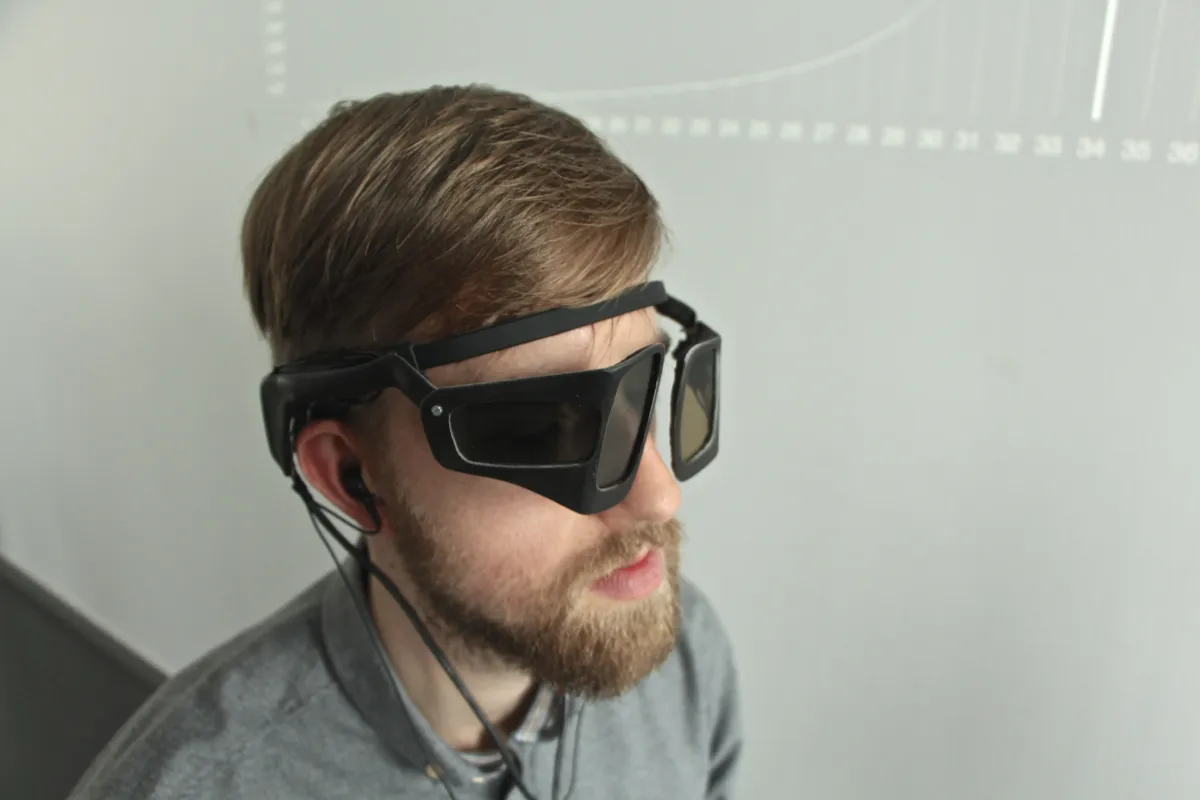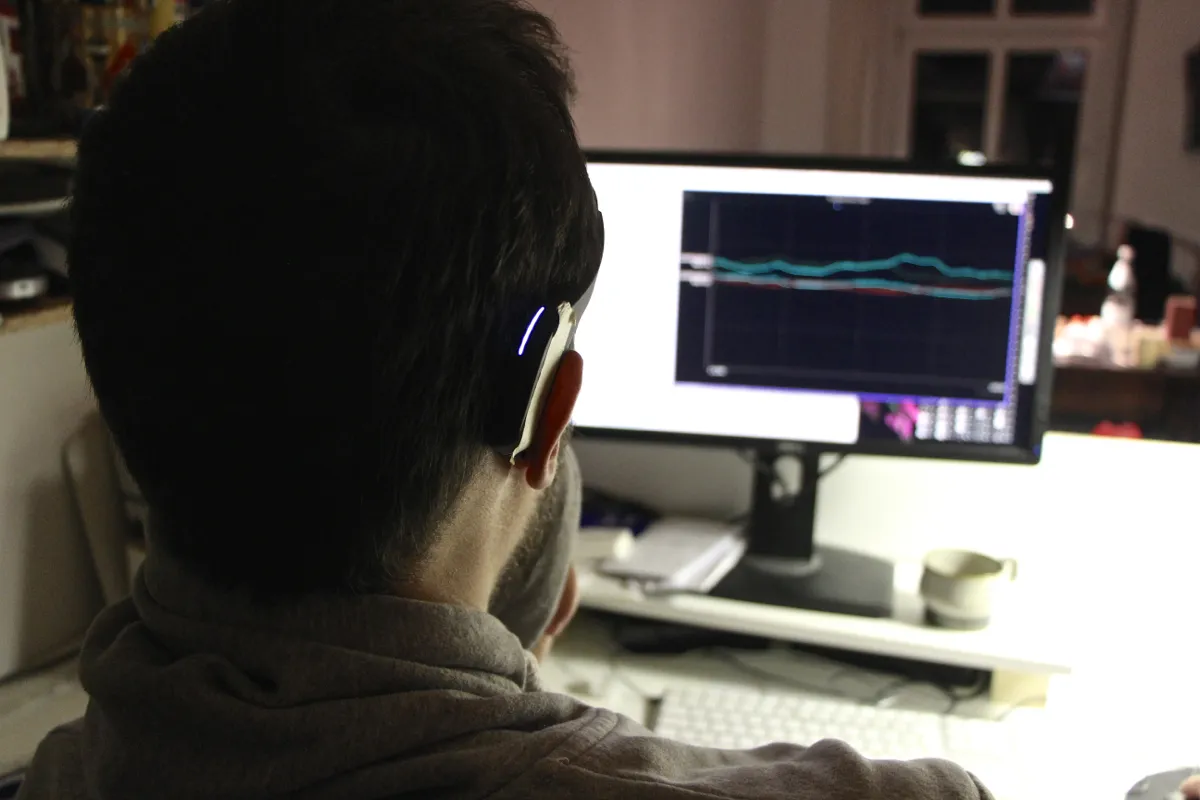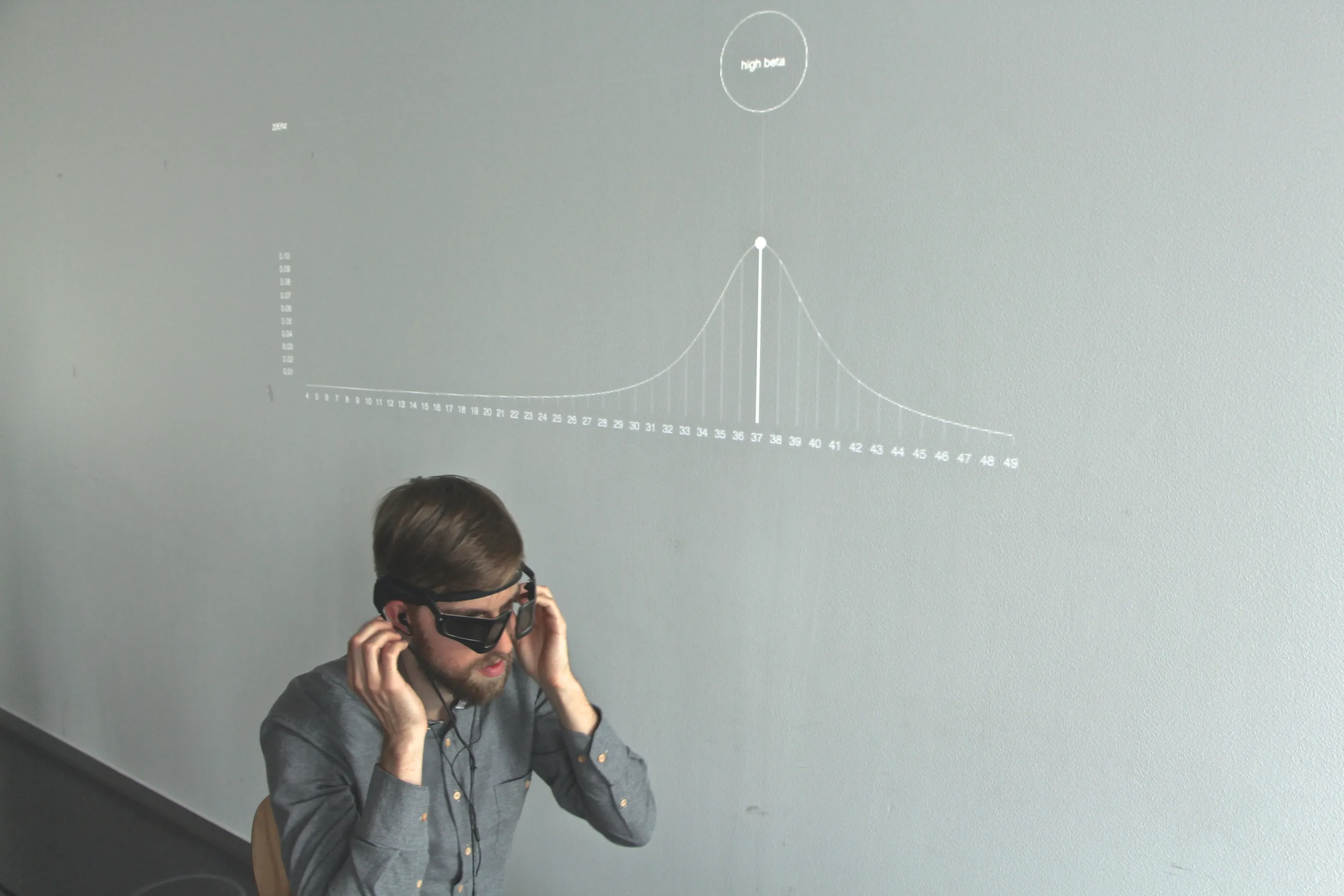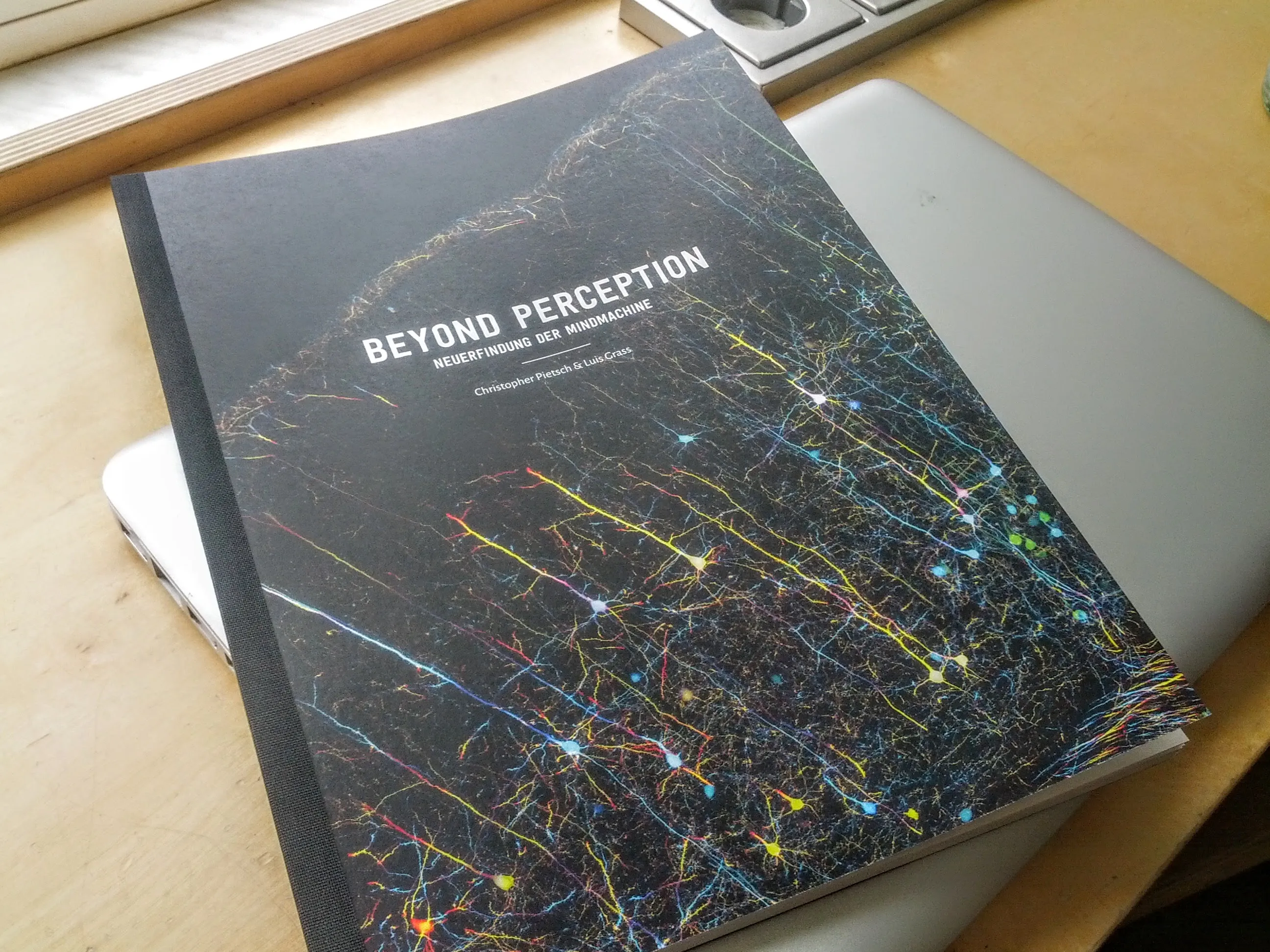Beyond Perception

“Beyond Perception - Reinventing the Mindmachine” is my bachelor’s thesis and explores the measurement of the brain and techniques for brain stimulation. We aim to transform passive consumption of mind machines into an interactive experience by using a portable EEG headset to allow individuals to use their own brain activity as a source for changing stimulation. The thesis delves into the current race to decode the brain and provides an overview of the rapid progress in neurosciences, neurotechnology, and BCI. It also sheds light on trends in neurotechnology and their cultural shift towards opening up technologies. We explore how light and sound can be used as interfaces to influence consciousness. Overall, this thesis presents a new approach to mind machines that allows for personalized stimulation based on individual brain activity.
Download the thesis as deepl translation pdf or the orginal german pdf.
Our experiment explores the potential of using brain activity as a source for changing stimulation. This approach has implications for the development of brain-computer interfaces (BCIs) and other AI technologies that rely on understanding and interpreting brain activity. We provide insights into the current state of research on brain decoding and highlight the rapid progress in neurotechnology. By exploring how light and sound can be used as interfaces to influence consciousness, this experiment contributes to our understanding of how digital stimulation can be used to enhance human capabilities.
The thesis was created in collaboration with Luis Grass to finish our study of Interface Design at the University of Applied Sciences Potsdam after many years of experimenting.
Over the past thirty years, there has been an explosive growth in brain research so that today, with the latest neuroscientific discoveries, it is possible to approach existential topics that have been the exclusive domain of the exclusive domain of the human sciences for centuries. One is now able to map cerebral anatomy and, using a variety of imaging techniques. These technologies make it possible to directly observe which brain areas are involved in a variety of perceptual, executive and cognitive tasks. With scientific progress comes the opening up of technology in the non-scientific realm, as well as the development of the methods and applications of brain computer Interfaces (BCI) have accompanied it. Inexpensive and accessible to the EEG devices lower the inhibition threshold and simplify the creative use of brain wave with the reading of brain waves.

Building on this development, the following paper outlines how proven stimulation techniques can be used to provide a communication channel for self-exploration. open. For this purpose, with the help of a portable EEG headset the own brain activity is used as a source to change an audiovisual stimulation. Thus, the passive consumption of mindmachines can be transformed into an interactive experience.


